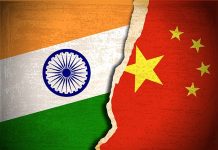This article is written by Priya Rani pursuing a Diploma in Intellectual Property, Media and Entertainment Laws and a
Diploma in Advanced Contract Drafting, Negotiation and Dispute Resolution. This article has been edited by Ojuswi (Associate, Lawsikho).
This article has been published by Sneha Mahawar.
Table of Contents
Introduction
The last decade has witnessed an explosion of inventions from across the globe. Patents and trademarks are the lifeblood of innovation. They help turn an idea into reality and generate millions of dollars in return. Intellectual property has indeed become a key battleground between the world’s biggest economic powers.
The 2021 Global Innovation Index Report released by World Intellectual Property Organisation (WIPO) shows that China ranked 12th, two places up from the previous year. The Report is an indicator of China’s progress in innovation. China is one step closer to getting into the elite top ten.
The Global Innovation Index Report is important as it is a benchmark for measuring innovation and also aids as a pointer for governments to make economic decisions. China’s global innovation index ranking has steadily increased with a strong upward momentum since 2013.
The different parameters such as China’s trade, competition, market size, and knowledge show they are in the world’s leading position. The diversification of domestic industries, the average expenditure of the top global R&D companies, the average score of top universities, the development of industrial sectors, and the proportion of total capital formation in GDP are indicators that show that China has taken more measures to promote, strengthen and optimize a better environment for enterprises to innovate and develop. China is gradually transforming itself from a country that imports knowledge to a country that produces knowledge and innovations.
History
China was a majorly impoverished agrarian economy a few centuries ago. The high population of China made it a labour-intensive industry where labour and materials were cheap. Over a period of time, China turned to a commercial economy that supplies plants and equipment. Today, China is fast evolving into a knowledge-based economy. China is on the verge of becoming a high-tech country known for ‘smart’ manufacturing and powered by next-generation technologies such as quantum computing, artificial intelligence and semiconductor chips.
Establishing a strong IP framework in China
Before 1980, the year in which China joined WIPO, the concept of Intellectual property was non-existent in the region. China later joined WTO in 2001 and systematic progress with respect to laws pertaining to intellectual property rights was made. Their core intellectual property law has undergone several rounds of significant amendments to keep pace with rapidly changing social development and bring it on par with international standards China is determined to provide better protection for intellectual property rights. Some of the notable changes are:
- The Patent law was amended four times – 1990, 2000, 2008 and again in 2020. In the three and a half decades since its first patent law in 1985 China has built a mature patent system bringing it in line with the US and the EU patent system.
- The Copyright law was amended for the third time in 2020, bringing in some of the key changes such as including digitization of the reproduction rights.
- The Trademark Law was amended three times with the latest amendment in 2019. The changes included enhancement of the obligation to use trademarks like bringing in more severe penalties for bad faith applications for trademark registration and bad faith litigation activities.
- The Anti-Unfair Competition Law which was not amended in the last 20 years since its enactment was amended twice- in 2017 and 2019.
- The scope of trade secrets was expanded with the reversal of the burden of proof in infringement cases. The burden of proof for illegal income related to infringement is now on the infringers.
The amendment includes stringent provisions against infringement such as punitive damages for intentional infringement and holds statutory maximum folds of punitive damage to five-folds, which explicitly conveys a strong signal to strengthen the judicial protection of intellectual property rights. The statutory maximum folds of punitive damages were applied in the case of Technical Secret Infringement Dispute of Guangzhou TINCI Materials Technology Co., Ltd., etc. v. Anhui Newman Fine Chemicals Co., Ltd.
This case is significant as it was the first civil case of infringement to which the Supreme People’s Court applied statutory maximum five folds of punitive damages.
In this case, the plaintiffs alleged that the respondent company had infringed their technical secret of the “Kabo” manufacturing process and therefore filed a lawsuit in the Guangzhou Intellectual Property Court requesting to stop the infringing activities, tender an apology and compensate for the losses. The Guangzhou IP Court found the respondents guilty of the act and applied 2.5 times punitive damages. Unsatisfied with the compensation amount, the plaintiffs appealed to the Supreme People’s Court. While sustaining the judgement of the first instance court that the respondents had intentionally caused the infringement, the Supreme Court held that the Guangzhou Court had not fully considered the degree of subjective malice of the infringer in calculating the compensation. The judgement, considered factors such as the contribution of the infringed technology, subjective malice of the sued infringer, committing infringement as the primary business, the act of spoliation of evidence, the long duration and the large scale of the infringement, and finally determined the statutory maximum folds of punitive damages (five-folds). The judgement sends out a strong message that China is serious about strengthening judicial protection of intellectual property rights.
The penalty for criminal offences relating to intellectual property has been also strengthened by bringing amendments to the Criminal Law.
Transforming China into an Intellectual Property Powerhouse:
China has come up with an ambitious scheme and has released “The Outline of Building an Intellectual Property Rights Powerhouse (2021-2035) on 22 September 2021 which marks two stages of development:
- by 2021, China aims to be the powerhouse of IPR;
- by 2035, China’s intellectual property rights to occupy the leading position in the world.
The Outline draws a clear road map to boost innovation in the country with the aid of a stringent legal framework to protect intellectual property rights. It is a continuation of China’s National IP Strategy issued in 2008 and will be the strongest policy that will be a guide for the next three Five Year Plans.
While innovation is the primary driving force of development, patents are often considered one of the most important indicators of innovative activities. The number of patent applications filed through the Patent Cooperation Treaty (PCT) of the World Intellectual Property Organisation (WIPO) is also one of the most widely used indicators to measure innovative activities. China surpassed the US in the number of PCT patent applications in 2019 and maintained an annual growth of 16% in 2020. This means China is the world’s top international patent filing country for the second consecutive year.
WIPO released the “Global Innovation Index (GII) 2021”, in which China ranked 12th, which is two places up from the year 2020. It is now positioned in first place among middle-income countries and has surpassed developed countries such as Japan, Israel and Canada. In terms of innovation, China has made significant growth in intangible assets, knowledge creation and the influence of knowledge. China is in the world’s leading position in many segmented indexes such as the number of patent and trademark applications by domestic applicants and the proportion of exported creative products in total trade. China is gradually transforming into an intellectual property powerhouse.
Tightening intellectual property laws
The number of intellectual property applications in China has continued to grow rapidly year on year under incentive schemes such as government funding for patent applications and tax benefits for high tech companies. However, filing that deviates from the purpose of protecting innovation, such as irregular patent applications and bad faith trademark squatting, has become an increasingly serious and unique problem. To counter this, China has adopted various strategies to promote the quality of intellectual property rights.
- Specialized Intellectual Property Courts & Tribunals – China has set up a system of specialized IP adjudication to bring a faster and more efficient trial system for IP related disputes. China has established specialized courts in its three leading metropolises namely Beijing, Shanghai and Guangzhou and eighteen specialized regional IP tribunals in the capital or important cities of fifteen provinces. On 1st January 2019, an IP specialized (appellate) tribunal under the Supreme People’s Court of China, began its operation to hear appeals in civil and administrative cases of technology-related matters of intellectual property disputes nationwide. By centralizing IP related cases they hope to bring in a unified standard for Court ruling and to keep pace with dynamic developments in IP law.
- China National Intellectual Property Administration (CNIPA)- An independent body called China National Intellectual Property Administration (CNIPA) has been constituted to combat irregular patent applications. The “Blue Sky” operation launched by CNIPA specialises in combating irregular patent applications and bad faith trademark squatting.
- Joint Oral hearing – A “joint oral hearing” mechanism was introduced to shorten the trial duration where administrative adjudication and criminal case of patent right invalidation filed against the same patent in question were jointly heard in the same place and on the same day. By exercising joint oral hearing, a consistency between the standards for infringement and invalidation decisions is achieved and efficiency is improved, which in turn saves the cost considerably.
- Abolished incentives and funds for utility models– The application for Utility model patents is inexpensive and is not substantively examined which provides for 10-year protection as opposed to the regular patent which provides a term of 20 years. As China aims to change the international perception of China’s poor patent quality, one of the steps taken by the Chinese government is to abolish all incentives and subsidies for utility models and design patents.
Challenges in the IP regime of China
China has made steady progress toward a better IP regime and enforcing IP rights. However, the counterfeiters and infringers in China are highly sophisticated. They exploit the procedural loopholes to invalidate legitimate patents and trademarks and use reverse engineering mechanisms to infiltrate patent rights. Intellectual Property violation remains a major concern for companies operating in China. The uneven enforcement and procedural barriers frustrate a company in its effort to protect IP in China. The IP registered in other countries are not recognized unless they are registered in China. Therefore, the first and foremost step towards IP protection in China is to register in China. If a company doesn’t file its copyrights, patents and trademarks in China its IP has no formal protection there.
Conclusion
China’s IP system was born in response to the demand for reform and opening up of its market to support the country’s rapid economic and social development. A few decades ago, China did not have a proper patent system and today the country is aggressively using patent policy to create innovation as the pathway to the future. China has got its focus on the quality of intellectual property development, transforming from a major intellectual property rights creator into a major intellectual property rights exporter.
The pandemic of COVID 19 has played havoc around the world and the economy. But there are some sectors like digitalization, technology and innovation which have shown resilience. As the world looks to rebuild from the pandemic, innovation plays an integral role in overcoming the common challenges that we face and building a better future. China is leading by example in the field of innovations along with the change of laws they made in the field of intellectual property.
Reference
- www.uschina.org
- www.lexology.com
- www.law.berkley.edu
- www.schlich.co.uk
- www.rouse.com
- https://conventuslaw.com
- https://chinaiplawupdate.com
Students of Lawsikho courses regularly produce writing assignments and work on practical exercises as a part of their coursework and develop themselves in real-life practical skills.
LawSikho has created a telegram group for exchanging legal knowledge, referrals, and various opportunities. You can click on this link and join:
Follow us on Instagram and subscribe to our YouTube channel for more amazing legal content.
 Serato DJ Crack 2025Serato DJ PRO Crack
Serato DJ Crack 2025Serato DJ PRO Crack










 Allow notifications
Allow notifications



